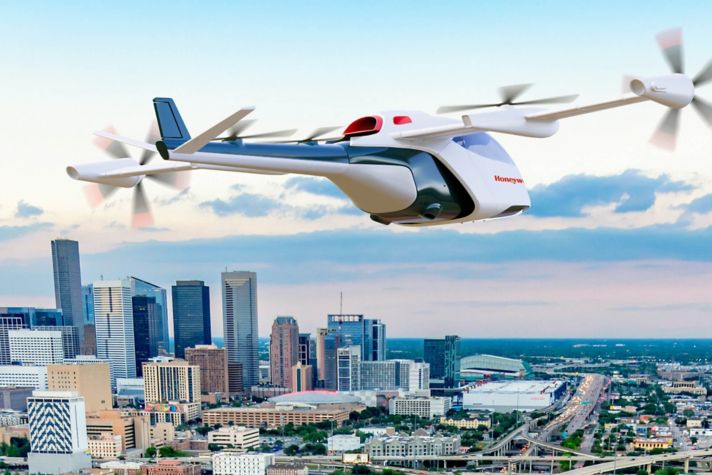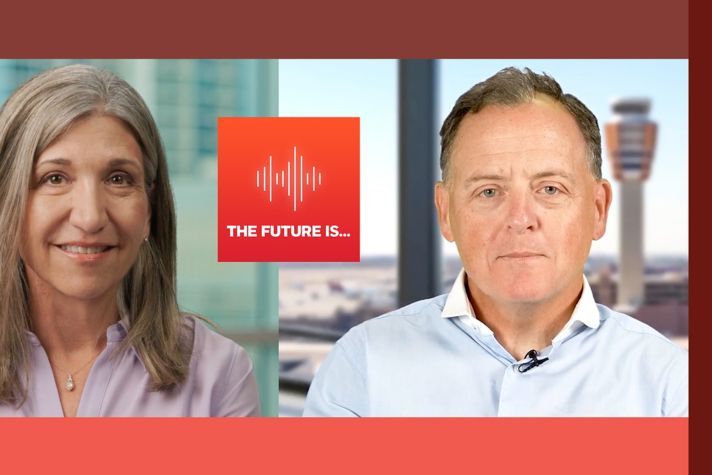-
 Global
Global-
Africa
-
Asia Pacific
-
Europe
-
Latin America
-
Middle East
-
North America
- |
- BUSINESSES
- |
- Contact
- |
-
 Global
Global-
Africa
-
Asia Pacific
-
Europe
-
Latin America
-
Middle East
-
North America
- |
- BUSINESSES
- |
- Contact
- |
You are browsing the product catalog for
You are viewing the overview and resources for
- News
- What It’s Like Being a Flight Test Pilot
What It’s Like Being a Flight Test Pilot
To celebrate the 40th anniversary of a unique aircraft that helps us bring aviation technology to life, get to know a #futureshaper at the helm of our flight test operations.
Have you ever spotted a Honeywell-branded airplane in the sky or on the runway?
From the outside, these planes may look typical, but beneath the surface, they’re one-of-a-kind aircraft that often serve as the last stop for our aviation technologies before they’re able to be used on widely on commercial planes, jets, military aircraft and beyond.
Perhaps one of the most beloved planes in our diverse fleet of test aircraft is the Boeing 757-200, which recently turned 40 years old.
How it started – and how it’s going
The plane started its career in service with Eastern Airlines in 1983. In 2005, Honeywell acquired the aircraft, and it took on a new life as a testbed for products developed by our aerospace engineers – from state-of-the-art engines to in-flight, high-speed Wi-Fi and satellite communication systems.
Also known by its call sign HNW757, the aircraft has been all over the world – more than 30 countries and five continents, to be exact – and has completed more than 800 engineering flight tests in its time at Honeywell.
To celebrate the milestone, we spoke with Captain Joe Duval, director of flight test operations (pictured above, left), to learn more about how our unique fleet of test aircraft helps us innovate.
What does a flight test pilot do, and why are these tests so important?
Joe: “As engineering test pilots, we’re not the first to fly the aircraft. Rather, we’re oftentimes the first to fly a product on an aircraft.
For example, in developing a terrain awareness system, we’re the first to fly a plane with that system onboard. The goal is to prove that the system works as advertised and that it will provide the appropriate warnings in a timely fashion – and ultimately, make flights safer for the flying public: passengers, flight attendants and crew.
What’s cool about this job is that we get to follow the lifecycle of a product – from helping to develop it to offering inputs from an operational perspective, then seeing it through certification, then demonstrating how it works.”
What’s unique about the Boeing 757 that’s part of our fleet of test aircraft?
Joe: “If you look at the cockpit of this plane, on the surface, it still looks quite like it did in 1982, but what’s underneath is all world-class technology that allows the plane to participate in the air system globally today, despite it being 40 years old.
We’re not only testing products that would go on a Boeing 757. Our 757 has been the dependable workhorse that allows us to test a whole slew of technologies, including the engines we produce for business jets and smaller aircraft.
With any test we conduct, we’re able to gather data for multiple products or systems simultaneously. This also speaks to the sustainability of the aircraft in that we can make the most of each flight.”
What’s one of the most memorable experiences you’ve had on our B757?
Joe: “Some of the most memorable moments were the first times we went overseas in the aircraft. One instance was a trip to Southeast Asia, where we were headed to conduct testing of our IntuVue RDR-4000 3D Weather Radar System.
There happened to be a cyclone headed our way, which we ended up having to circumvent. We had engineers on board to look at the data from the radar in real-time as we experienced the effects of what’s known as ice crystal icing, a type of condition that can be hazardous to some aircraft. We returned safely, and the accomplishment is that we learned a lot about the radar through that test.”
Learn more about the 40th anniversary of our Boeing 757 test aircraft, and read about one of the next critical innovations in aviation: sustainable aviation fuel (SAF).
Copyright © 2025 Honeywell International Inc.




